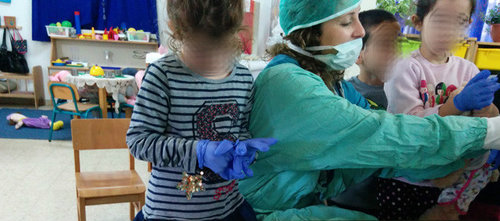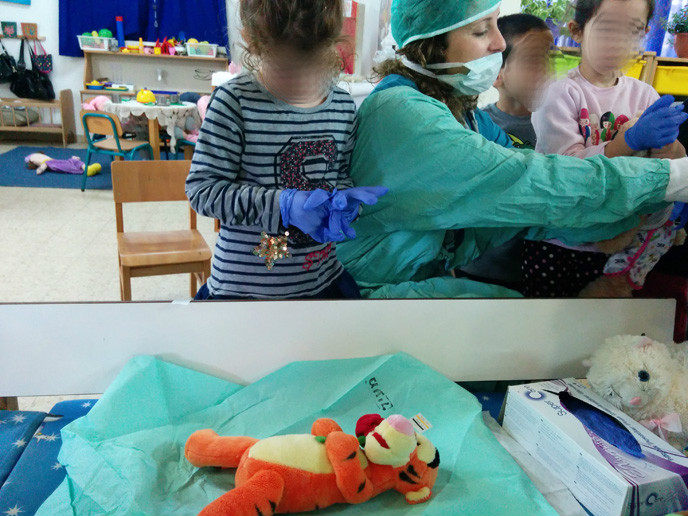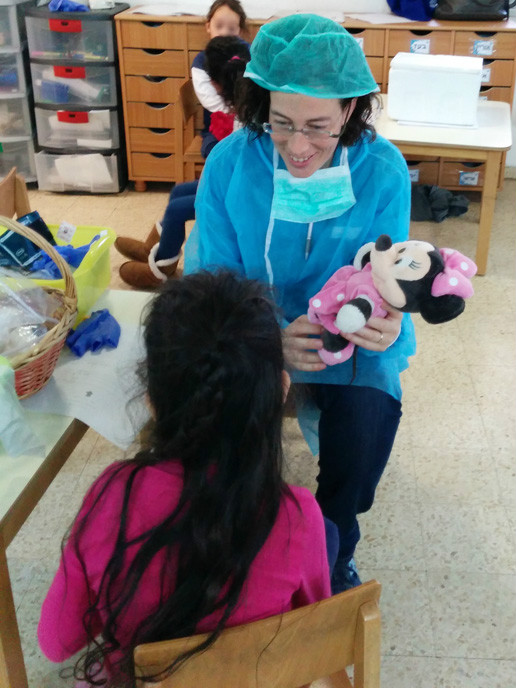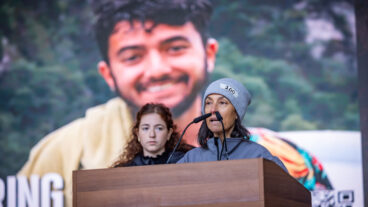None of my three children has ever been afraid of the doctor. Which is a good thing, of course. On top of bringing home numerous flu-like viruses, my kids (the oldest two are seven) seem prone to Streptococcus infections, and cumulatively have experienced three hernia operations and a broken finger.
But for many children, the mere thought of visiting a doctor can be horrifying.
Enter the Teddy Bear Hospital public-health project — an international initiative that helps alleviate fear of physicians and hospitals among three- to six-year-olds.
Not to be confused with the teddy bear hospitals for broken dolls, this cuddly project gives children a close-up encounter with real medical staff in the name of fun and learning.
Hospitals around the globe usually designate a day and invite children to bring their dolls to be treated by medical students. Soroka University Medical Center in Beersheva also treats bears for trauma experienced during a rocket attack.
Sometimes, the medical students or doctors taking part in the project come to the classroom. Such was the case for my nearly five-year-old son when his classmate’s mother, a pediatrician, brought the hospital to kindergarten.
Two other parents were enlisted as helpers – I was chosen to be the nurse, while a father (who works in advertising by day) was X-ray technician and secretary.
The children each brought a doll from home and made up an ailment. When they checked into the hospital, the little “parents” were given a form to fill in, and told the real adults what to write. The teddy bears, dinosaurs, babies and Smurf dolls were indeed a very sick bunch.
They had sore throats, broken bones, sore tummies, rashes, appendicitis, chicken pox, cancer (!) and gashes. Almost none of them had a clear medical history and some of them changed their names mid-examination.
All the dolls stopped at the nurse’s station for a blood-pressure and temperature check, as well as bandaging, if necessary, before moving on to the doctor.
A few of them were sent to surgery, where the adults were decked out in disposable gowns, latex gloves and head coverings. While the doctor mom explained what she was doing to cure the sick doll, the kids were encouraged to try on the hospital gear, help bandage the dolls and handle the gauze pads, intravenous needles (without the needle), bandages and blood-pressure cuffs, stethoscopes and oxygen masks.
Some of the kids were so pleased with the care that they came back with the same doll and a new ailment for further treatment. Others were a bit upset when they heard their bear had to go to surgery or be put in isolation for a rare case of canine chickenpox. The children who chose a flavor for pretend medicine were in fits of laughter when told their doll didn’t like what they had chosen.
“Our results indicate that by initiating a controlled pain-free encounter with the medical environment in the form of a teddy bear hospital, we can reduce children’s anxiety about hospitalization,” pediatricians Yuval Bloch and Asaf Toker of Soroka University Medical Center and Ben-Gurion University of the Negev wrote in a research paper on the international project.
They also noted that “children in the teddy bear hospital group reported significantly lower levels of anxiety” when seeing a doctor than kids who did not take part in the project.
At the end of the activity, the children stuffed their dolls back into their knapsacks, grabbed their snacks and headed outdoors to play. Needless to say, not one of the kids stayed behind to help the adults clean up.
















